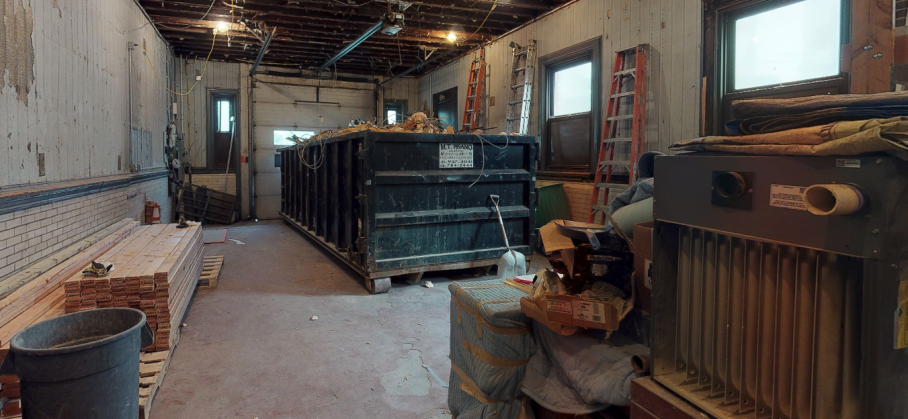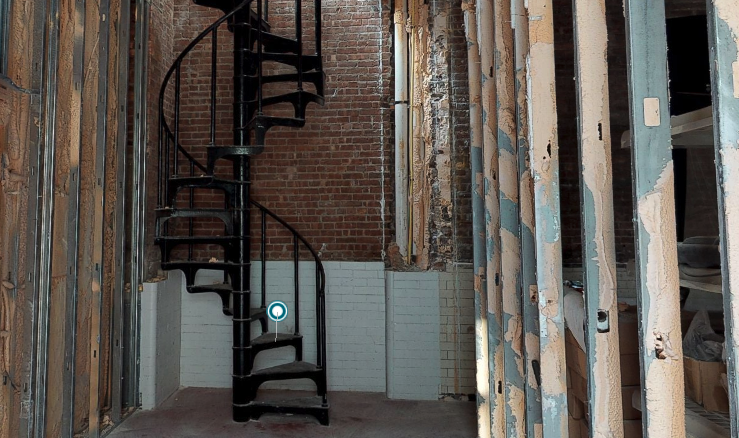Post-Demolition Man (Part Two of Four)
Anthony Carrino of TheBuild.tv gets down and dirty demolition-style while renovating his classic 1896 firehouse

Sometimes in life, you’ve got to roll up your sleeves and do the dirty work. Thankfully for TheBuild.tv’s Anthony Carrino, a messy and bedraggled demolition project is more enjoyable than it might initially sound — foam-insulation snafus aside.
In part one of our four-part series, Carrino explained how he painstakingly transformed the historic building - firstly into company headquarters, and then renovating it a second time into his dream home.
Part two of our series is all about dismantling the dilapidated structure from the inside-out to get things moving in the right direction. Before he can construct his future home, Carrino has to deconstruct everything from spray foam to cast-iron staircases.
Carrino breaks down how planning and elbow grease result in the blank canvas needed to slowly transform this his dream home, and he captures the controlled chaos with his Matterport Pro2 3D camera for all to see.
Q: Any interesting fun facts found during demolition?
Being as this was the second time I renovated this property, I kinda knew what was in store. That said, I utilized a tactic that saved me a lot of time and money. Due to the massive garage door on this building - you know, like big enough to get a fire truck through - I was able to have the garbage containers delivered inside the building.

This allowed for a few things: I avoided paying for a street permit for every container, and I cut a hole in the floor upstairs directly over the container, which allowed us to drop all the debris through the floor joists directly into the containers. This reduced our clean-out times significantly.
Q: What were some of the challenges you ran into during the demolition?
The demo was pretty straight-forward, with one exception: I forgot we put spray foam insulation in the walls and ceiling during the first renovation, and this was a total pain to remove.
The next obvious question is why remove it. Why not just leave it in place?
The answer here is that I was changing the structure’s use to a home and needed to get electrical and plumbing to different locations than existing ones based on my new floor plan, so I needed the wall cavities empty to run pipe and wire.

So, we had to scrape it all out, which added four days to what was otherwise a very easy demolition. For clarity, I think spray foam is an excellent insulation option, especially in rural areas where you’re trying to keep little critters out of your home. It fills absolutely every crack and crevice. I ultimately decided on using Rockwool insulation when I built it all back due to its sound attenuation properties and its superior fire protection - two massive selling points for me.
Q: Are there any significant dos/don’ts?
People are usually super excited to start demolitions. You see so much change so quickly, and you have that ‘we’ve finally started’ feeling - but I would encourage you to make sure you have a good plan in place. Separate your materials and pack dumpsters in an orderly fashion, so you don’t wind up with a lot of air gaps and wasted space (think pick-up sticks; that’s bad).
Dumpsters are expensive, so you want to pack them tight. You are also much better off disassembling your home than going all Chip Gaines and running through sheetrock walls. It’s fun to watch on TV, but it can cause more problems. It’s typically a good idea to know what’s behind the wall before running through it.
Q: What was the most time-consuming part of the demolition?
Ha! See my comments on spray foam insulation above.
Q: What was your favorite part about capturing this phase of The Firehouse in 3D?
I love to have a record of the blank canvas, so to speak. It’s great to look back on the model to see how much we accomplished. I mean, I have photos of the demo too, but to have an immersive experience where I can go back and ‘walk through’ what once was is so cool.
Q: Anything else you would like to add?
It broke my heart to remove that original cast-iron staircase, but it did go to a good home in Western New Jersey. A guy who was renovating his barn bought it and used it to get to the barn’s loft. It makes me happy to know that the staircase is going to good use.

And to answer the ‘why not just leave them’ question, it’s a super small radius stair and simply not practical for daily home living! Plus, they no longer adhere to code as the balusters are farther apart than 4”, which Jersey City doesn't permit.
